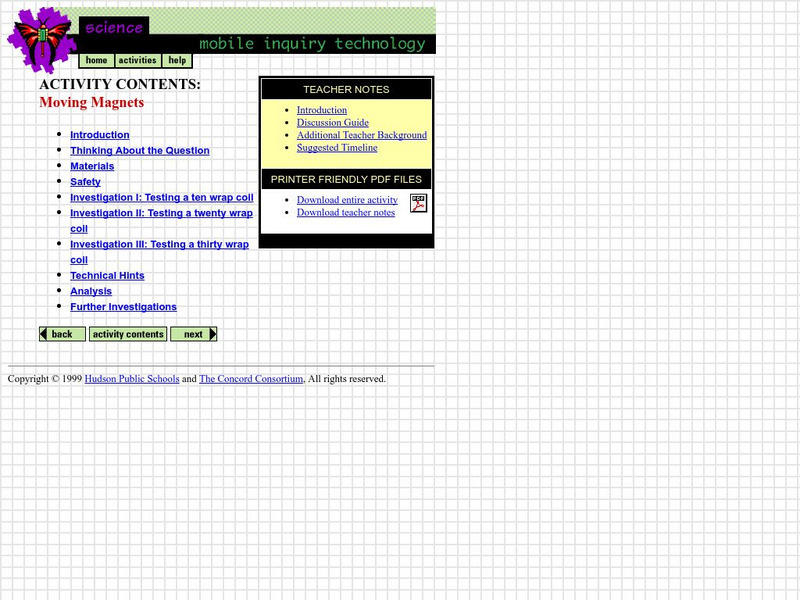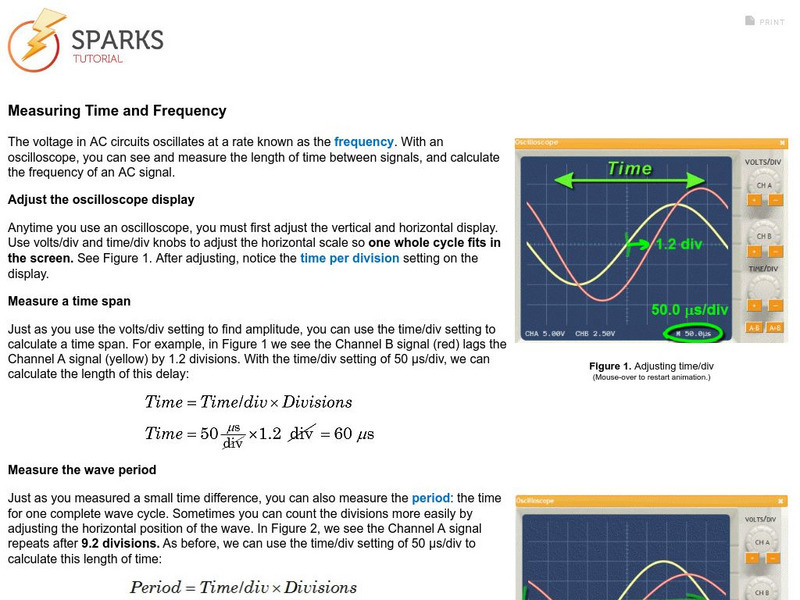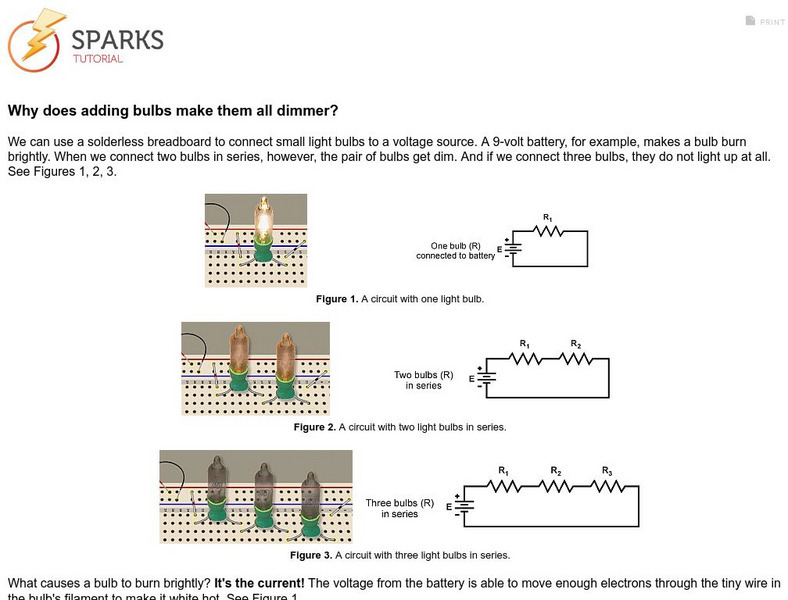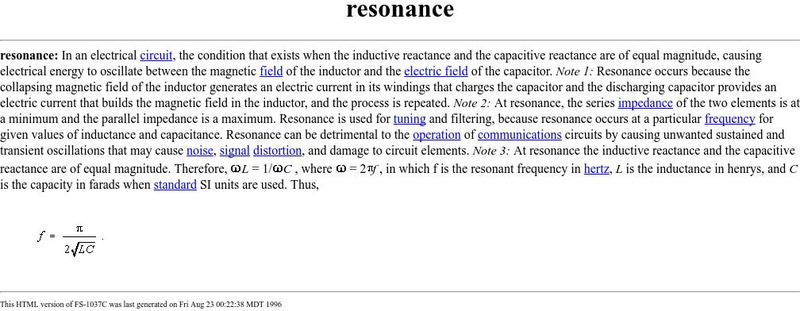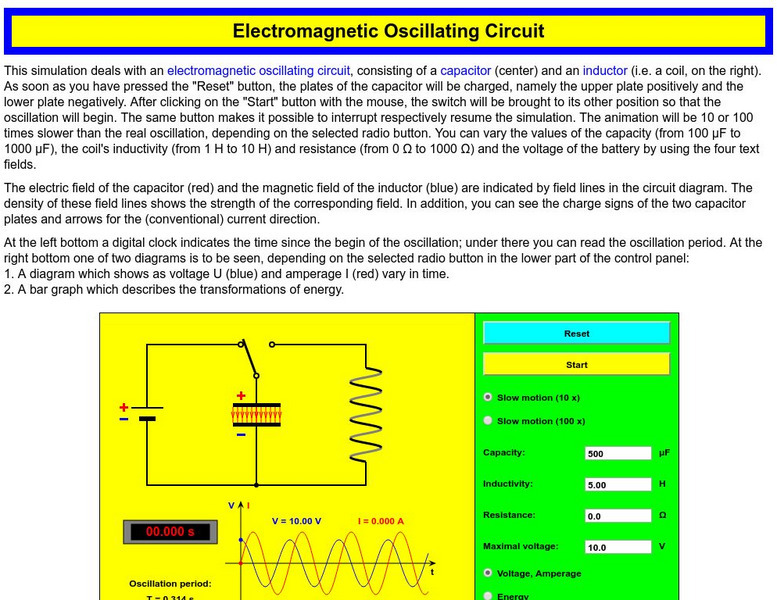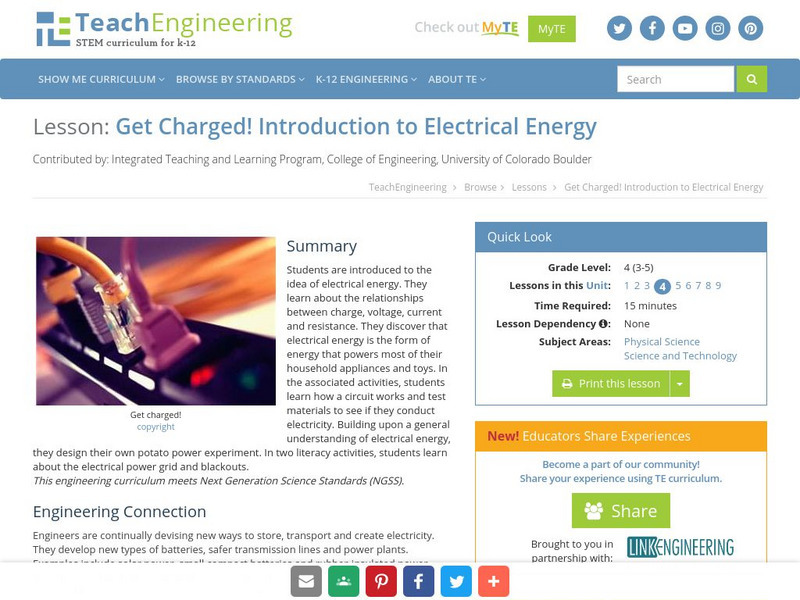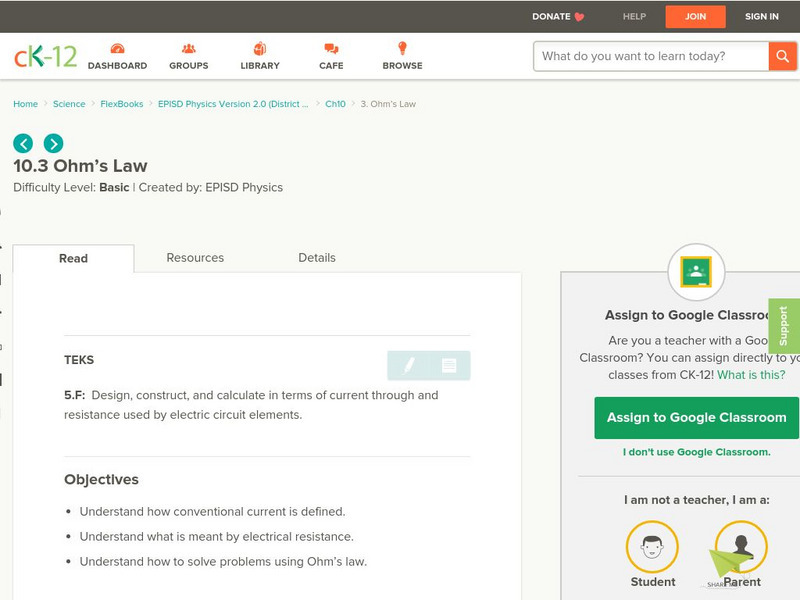Hi, what do you want to do?
Concord Consortium
Concord Consortium: Calculating Reactance
Find out how the current in a circuit can be impeded by three types of circuit components.
Science Struck
Science Struck: Lcr Meter Working Principle and Uses
Explains what an LCR meter is and how it is used to measure the inductance, capacitance, and resistance of a circuit. Lists the different parameters of a circuit that it measures, describes two types of LCR meters, and gives definitions...
Physics Aviary
Physics Aviary: Practice Problems: Finding Battery Voltage Simple
Determine the voltage of the battery based on the colors of the resistor and the current in the circuit.
Concord Consortium
Mobile Inquiry Technology: Moving Magnets
This investigation has students examining how electric and magnetic charges are related. They will look at how an electric current is affected by the proximity of a magnet.
Concord Consortium
Concord Consortium: Measuring Time and Frequency
The voltage in AC circuits oscillates at a rate known as the frequency. With an oscilloscope, see and measure the length of time between signals, and calculate the frequency of an AC signal.
Concord Consortium
Concord Consortium: Why Does Adding Bulbs Make Them All Dimmer?
This tutorial illustrates why adding bulbs to a circuit makes all the bulbs dimmer.
Other
Institute for Telecommunication Sciences: Resonance
This site contains a straightforward definition of resonance in an electrical circuit.
Walter Fendt
Walter Fendt: Simple Ac Circuits
This simulation shows a simple circuit consisting of an AC voltage source and, depending on the button selected, a resistor, a capacitor or a coil.
Walter Fendt
Walter Fendt: Electromagnetic Oscillating Circuit
This simulation is about an oscillatory electromagnetic circuit formed by a capacitor and an inductor.
Science and Mathematics Initiative for Learning Enhancement (SMILE)
Smile: Electromagnets
This lesson plan contains several activities designed to help the student understand the magnetic effects of an electrical current.
National High Magnetic Field Laboratory
Magnet Academy: Wheatstone Bridge
This circuit is most commonly used to determine the value of an unknown resistance to an electrical current.
TeachEngineering
Teach Engineering: Get Charged!
Students are introduced to the idea of electrical energy. They learn about the relationships between charge, voltage, current and resistance. They discover that electrical energy is the form of energy that powers most of their household...
TeachEngineering
Teach Engineering: Bulbs & Batteries in a Row
Everyday we are surrounded by circuits that use "in parallel" and "in series" circuitry. Complicated circuits designed by engineers are composed of many simpler parallel and series circuits. During this activity, students build a simple...
Better Lesson
Better Lesson: The Lightbulb Just Went On!
Fourth graders discover how electricity can be converted to light energy.
National High Magnetic Field Laboratory
Magnet Academy: Magnetic Shunt
Magnetic shunts are often used to adjust the amount of flux in the magnetic circuits found in most electrical motors. (Java tutorial)
Concord Consortium
Mobile Inquiry Technology: Decaying Batteries
This investigation has students investigating and measuring the decay of batteries as their electric charges are used up in circuits.
National High Magnetic Field Laboratory
Magnet Academy: Joseph Henry
Joseph Henry was an American scientist who pioneered the construction of strong, practical electromagnets and built one of the first electromagnetic motors. During his experiments with electromagnetism, Henry discovered the property of...
CK-12 Foundation
Ck 12: Interactive Physics for High School
This digital textbook covers core physics concepts and includes interactive features, real world examples, videos, and study guides.
Concord Consortium
Concord Consortium: Calculating Voltage in Series Parallel Circuits
Use the series and parallel resistance formulas to determine the total resistances of the parts. Then, use Ohm's Law to calculate the voltage drops across each part.
Georgia State University
Georgia State University: Hyper Physics: Resistor Combinations
At this site from Georgia State University parallel and series connections of resistors are explained and illustrated. Equations for computing the overal voltage, current, and resistance of such circuits are given and explained.
Utah State Office of Education
Utah Science: The Mysterious Force
There is a secret mysterious force in your home right this very moment! Try these activities to first identify that force and then extend your knowledge of the force by investigating the other activities provided.
Khan Academy
Khan Academy: Resistors in Series and Parallel Review
Review how to find the equivalent resistance for resistors in parallel and series configurations. Recall the current and voltage properties of series and parallel configurations of resistors.
Khan Academy
Khan Academy: Kirchhoff's Loop Rule Review
Review the key terms and skills related to Kirchhoff's loop rule, including how to determine the electric potential difference across a component.
CK-12 Foundation
Ck 12: Ohm's Law
[Free Registration/Login may be required to access all resource tools.] For this lesson, students learn about the invention of the battery and how a battery works, and about resistance in an electrical circuit. As well, Ohm's Law is used...







